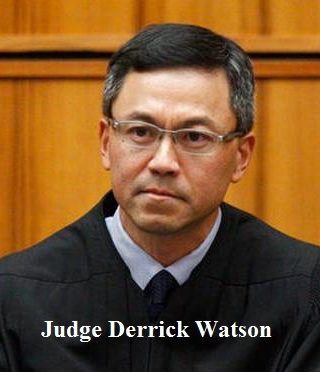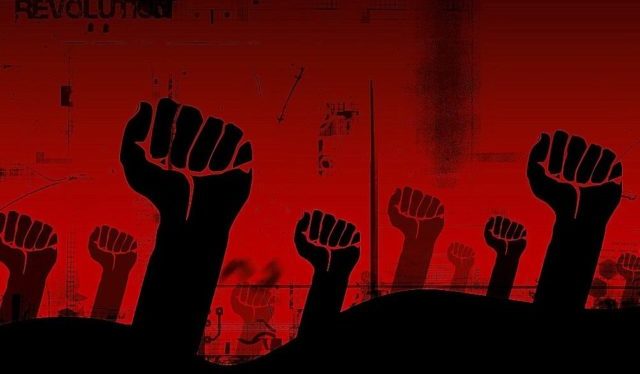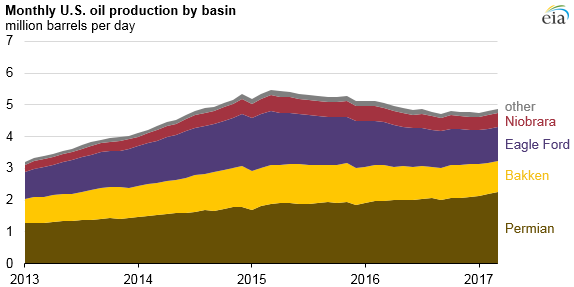From Radical Revolutionaries to Privileged Bureaucrats
The great German sociologist, Max Weber (1864-1920) offered an understanding of the evolution of socialist regimes in the twentieth century from revolutionary radicalism to a stagnant system of power, privilege and plunder, manned by self-interested Soviet socialist office holders.
Max Weber, in his posthumously published monumental treatise, Economy and Society (1925), defined a charismatic leader as one who stands out from the ordinary mass of men because of an element in his personality viewed as containing exceptional powers and qualities. He is on a mission because he has been endowed with a particular intellectual spark that enables him to see what other men do not, to understand what the mass of his fellow men fail to comprehend.
But his authority, Weber explains, does not come from others acknowledging his powers, per se. His sense of authority and destiny comes from within, knowing that he has a truth that he is to reveal to others and then knowing that truth will result in men being set free; and when others see the rightness of what he knows, it becomes obvious and inevitable that they should follow his leadership.
Certainly Vladimir Lenin (1870-1924) fit that description. While many who met or knew him pointed out his either non-descript or even unattractive physical appearance and presence, most emphasized at the same time Lenin’s single-mindedness of being on a “mission” for which he had absolute confidence and unswerving determination, and due to which others were drawn to him and accepted his leadership authority.
Surrounding Lenin, the charismatic, was an array of disciples and comrades who were called and chosen, and saw themselves as serving the same mission: the advancement of the socialist revolution. As Weber says:
“The . . . group that is subject to charismatic authority is based on an emotional form of communal relationship . . . It is . . . chosen in terms of the charismatic qualities of its members. The prophet has his disciples . . . There is a ‘call’ at the instance of the leader on the basis of the charismatic qualification of those he summons . . .”
The “chosen” group renounces (at least in principle, if not always in practice) the material temptations of the worldly circumstances, which the goal of their “mission” is meant to overthrow and destroy. And, this too, marked the often conspiring, secretive and sometimes Spartan lifestyle of Marxist revolutionaries. Max Weber explained:
“There is no such thing as salary or a benefice. Disciples or followers tend to live primarily in a communistic relationship with their leader . . . Pure charisma . . . disdains and repudiates economic exploitation of the gifts of grace as a source of income, though to be sure, this often remains more an ideal than a fact . . . On the other hand, ‘booty’. . . whether extracted by force or other means, is the other typical form of charismatic provision of needs.”
But once the charismatic and his followers are in power, a transformation soon occurs in their behavior and relationship to the rest of the society. Now it becomes impossible to stand outside of the flow of the mundane affairs of daily life. Indeed, if they do not immerse themselves in those matters, their power over society would be threatened with disintegration. Slowly, the burning fervor of ideological mission and revolutionary comradeship begins to die. Said Max Weber:
“Only the members of the small group of enthusiastic disciples and followers are prepared to devote their lives purely and idealistically to their calling. The great majority of disciples and followers will in the long run ‘make their living’ out of their ‘calling’ in a material sense as well . . . Hence, the routinization of charisma also takes the form of the appropriation of powers of control and of economic advantages by the followers and disciples and the regulation of the recruitment of these groups . . .
Correspondingly, in a developed political body the vassals, the holders of benefices, or officials are differentiated from the ‘taxpayers.’ The former, instead of being ‘followers’ of the leader, become state officials or appointed party officials . . . With the process of routinization the charismatic group tends to develop into one of the forms of everyday authority, particularly . . . the bureaucratic.”
I would suggest that in Max Weber’s analysis we see the outline of the historical process by which a band of Marxist revolutionaries, convinced that they saw the dictates of history in a way that other mere mortals did not, took upon themselves to be the midwives of that history through violent revolution.
But as the embers of socialist victory cooled, such as in Russia after the Revolution of 1917 and the bloody three-year civil war that followed, the revolutionaries had to turn to the mundane affairs of “building socialism.” Building socialism meant the transformation of society, and the transforming of society meant watching, overseeing, controlling and commanding everything.
Self-Interest and the New Socialist “Class Society”
Hence, was born in the new Soviet Union what came to be called the Nomenklatura. Beginning in 1919, the Communist Party established the procedure of forming lists of government or bureaucratic positions requiring official appointment and the accompanying lists of people who might be eligible for promotion to these higher positions of authority. Thus was born the new ruling class under socialism.
Ministries needed to be manned, Party positions needed to be filled, nationalized industries and collective farms needed managers assigned to supervise production and see to it that central planning targets were fulfilled, state distributions networks needed to be established, trade unions needed reliable Party directors, and mass media needed editors and reporters to tell the fabricated propaganda stories about socialism’s breakthrough victories in creating a new Soviet Man in his new glorious collectivist society.
Contrary to the socialist promises of making a new man out of the rubble of the old order, as one new stone after another was put into place and the socialist economy was constructed, into the cracks between the blocks sprouted once again the universals of human nature: the motives and psychology of self-interested behavior, the search for profitable avenues and opportunities to improve one’s own life and that of one’s family and friends, through the attempt to gain control over and forms of personal use of the “socialized” scarce resources and commodities within the networks and interconnections of the Soviet bureaucracy.
Since the state declared its ownership over all the means of production, it was not surprising that as the years and then the decades went by more and more people came to see membership in the Nomenklatura and its ancillary positions as the path to a more prosperous and pleasant life. In the end, the socialist state did not transform human nature; human nature found ways to use the socialist state for its own ends.
The system of privilege and corruption that Soviet socialism created was explained by Boris Yeltsin (1931-2007), the Russian Communist Party member who, more than many others, helped bring about the end of the Soviet Union and an independent Russia in 1991 that at first tried democracy. In his book, Against the Grain (1990), Yeltsin explained:
“The Kremlin ration, a special allocation of normally unobtainable products, is paid for by the top echelon at half its normal price, and it consists of the highest-quality foods. In Moscow, a total of 40,000 people enjoy the privilege of these special rations, in various categories of quantities and quality. There are whole sections of GUM – the huge department store that faces the Kremlin across Red Square – closed to the public and specially reserved for the highest of the elite, while for officials a rung or two lower on the ladder there are other special shops. All are called ‘special’: special workshops, special dry cleaners, special polyclinics, special hospitals, special houses, and special services. What a cynical use of the world!”
The promised “classless society” of material and social equality was, in fact, the most granulated system of hierarchical privilege and power. Bribery, corruption, connections and favoritism permeated the entire fabric of Soviet socialist society. Since the state owned, produced and distributed anything and everything, everyone had to have “friends,” or friends who knew the right people, or who knew the right person to whom you could show just how appreciative you could be through bribery or reciprocal favors to gain access to something impossible to obtain through the normal channels of the central planning distributive network for “the masses.”
And overlaid on this entire socialist system of power, privilege and Communist Party-led plunder was the Soviet secret police, the KGB, spying, surveilling and threatening anyone and everyone who challenged or questioned the propaganda or workings of the “workers’ paradise.”
Communist Contradictions and the End to Soviet Socialism
It is not an exaggeration to say that everything that the Marxists said was the nature of the capitalist system – exploitation of the many by a privileged few; a gross inequality of wealth and opportunity simply due to an artificial arrangement of control over the means of production; a manipulation of reality to make slavery seem as if it meant freedom – was, in fact, the nature and essence, of Soviet socialism. What a warped and perverted twisting of reality through an ideologically distorted looking glass!
It all finally came to an end in 1991 when the privilege, plunder and poverty of “real socialism” made the Soviet system unsustainable. Indeed, by that time it was hard to find anyone in any corner of Soviet society who believed, anymore, in the “false consciousness” of communist propaganda. The Soviet Union had reached the dead-end of ideological bankruptcy and social illegitimacy. The “super-structure” of Soviet power collapsed. (See my article, “The 25th Anniversary of the End of the Soviet Union.”)
In 1899, the French social psychologist, Gustave Le Bon (1841-1931), looked at the, then, growing socialist movement at the end of the nineteenth century and the soon to be beginning twentieth century, and sadly said in his book, The Psychology of Socialism:
“One nation, at least, will have to suffer . . . for the instruction of the world. It will be one of those practical lessons which alone can enlighten the nations who are amused with the dreams of happiness displayed before their eyes by the priests of the new [socialist] faith.”
Not only Russia, but also many other countries in Eastern Europe, Asia, Africa, and Latin America have been forced to provide that “practical lesson” in the political tyranny and economic disaster that socialist society, especially in its Marxist permutation, offered to mankind.
It stands as a stark demonstration of the disastrous consequences when a society fully abandons a political philosophy of classical liberal individualism, an economic system of free markets, and an acceptance of self-interested human nature functioning within a social arrangement of voluntary association and peaceful exchange.
Let us hope that with this year marking the one-hundredth anniversary of the communist revolution in Russia mankind will learn from that tragic mistake, and come to realize and accept that only individual liberty and economic freedom can provide the just, good, and prosperous society that humanity can and should have.
Based on a presentation delivered as the John W. Pope Lecture sponsored by the Clemson Institute for the Study of Capitalism at Clemson University on March 1, 2017.

Richard M. Ebeling is BB&T Distinguished Professor of Ethics and Free Enterprise Leadership at The Citadel in Charleston, South Carolina. He was president of the Foundation for Economic Education (FEE) from 2003 to 2008.













 Geert Wilders of the Dutch Freedom Party (PVV) lost in the March 15, 2017 elections to Mark Rutte of the conservative Freedom and Democracy VVD, who will be asked by King Willem to form a new ruling coalition government.
Geert Wilders of the Dutch Freedom Party (PVV) lost in the March 15, 2017 elections to Mark Rutte of the conservative Freedom and Democracy VVD, who will be asked by King Willem to form a new ruling coalition government.




 A a chronicle from the turning point September 28-30 2000 to Gaza withdrawal and beyond January 2006.
A a chronicle from the turning point September 28-30 2000 to Gaza withdrawal and beyond January 2006.





 According to
According to 


